A coat of many, many colors!
Few breeds of horse can claim the diversity of coloration to be found in the Akhal-Teke. They have 3 main basecoat colors: Black, Bay, and Red that along with a many color modifiers lead to stunning variations.
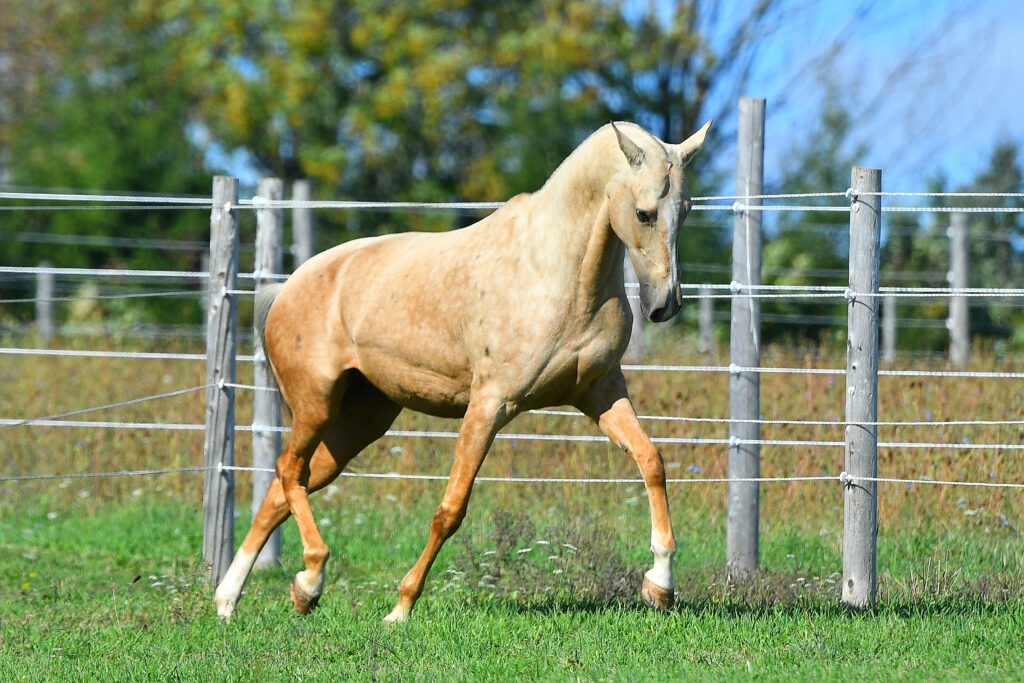
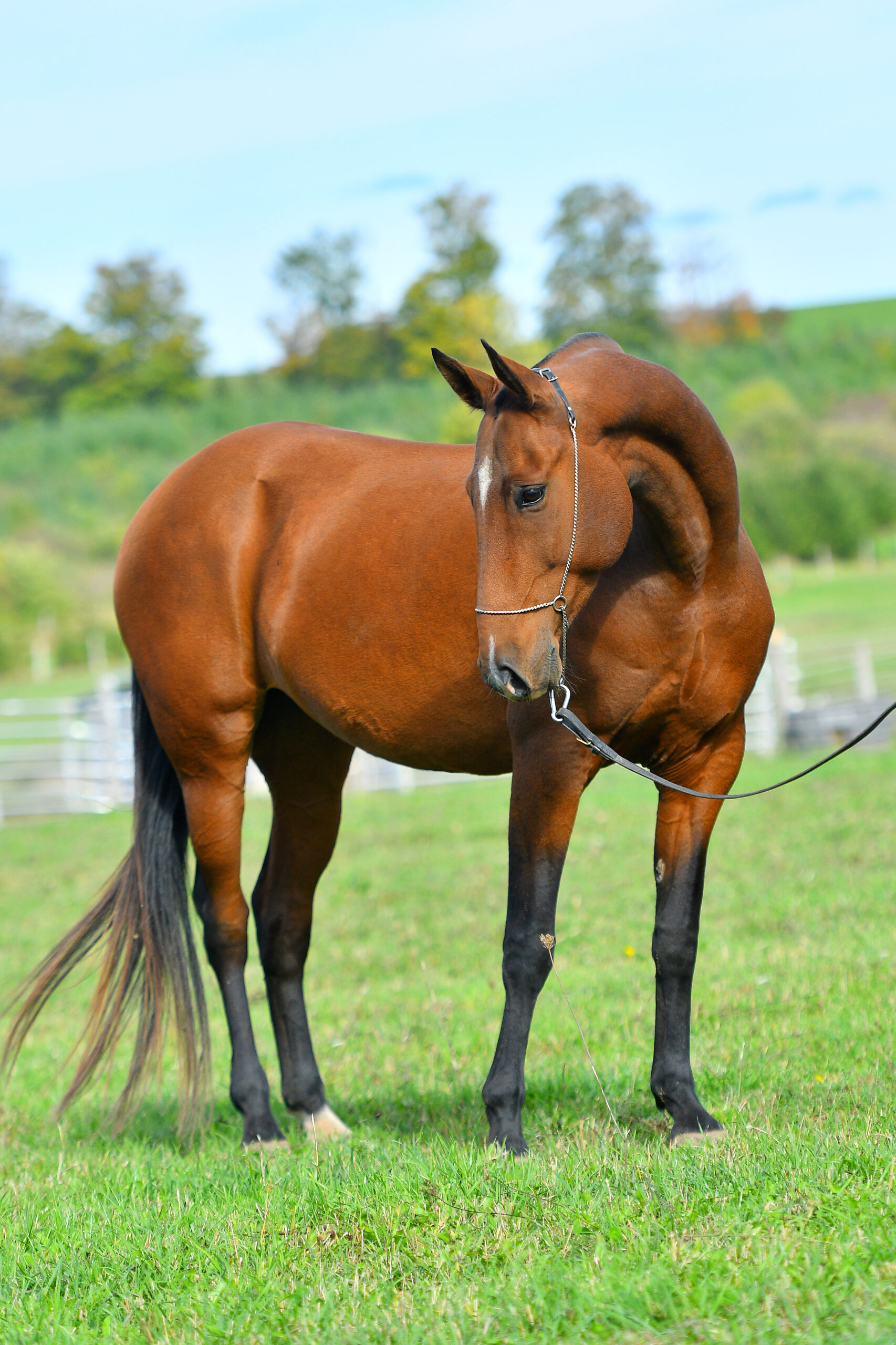

Black – EE or Ee and aa genotypes
This is a dominant gene, so the horse only needs to have 1 copy of “E”. The shade of black can run from a “raven black” (this color is so special that it has its own name, voronaya, in Russian) to a sunburned-chestnut color.
Black can be modified by the agouti gene (“A”) which modifies the black pigment (“pushes” black to the points- legs/mane/tail) – see “Bay” below.
Black can be modified by one dilute gene (“Cr”) to produce a smokey black.
Black can be modified by two dilute genes (“CrCr”) (one from each parent) to produce a smokey cream.
Black is the color of five time Olympic medalist (2 gold, 2 silver, 1 Bronze) ABSENT, and is found in many of his descendants. The picture below is of the stallion Helm, competing in dressage at Prix St. George.

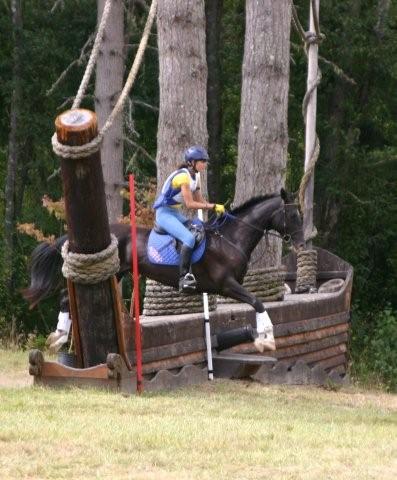
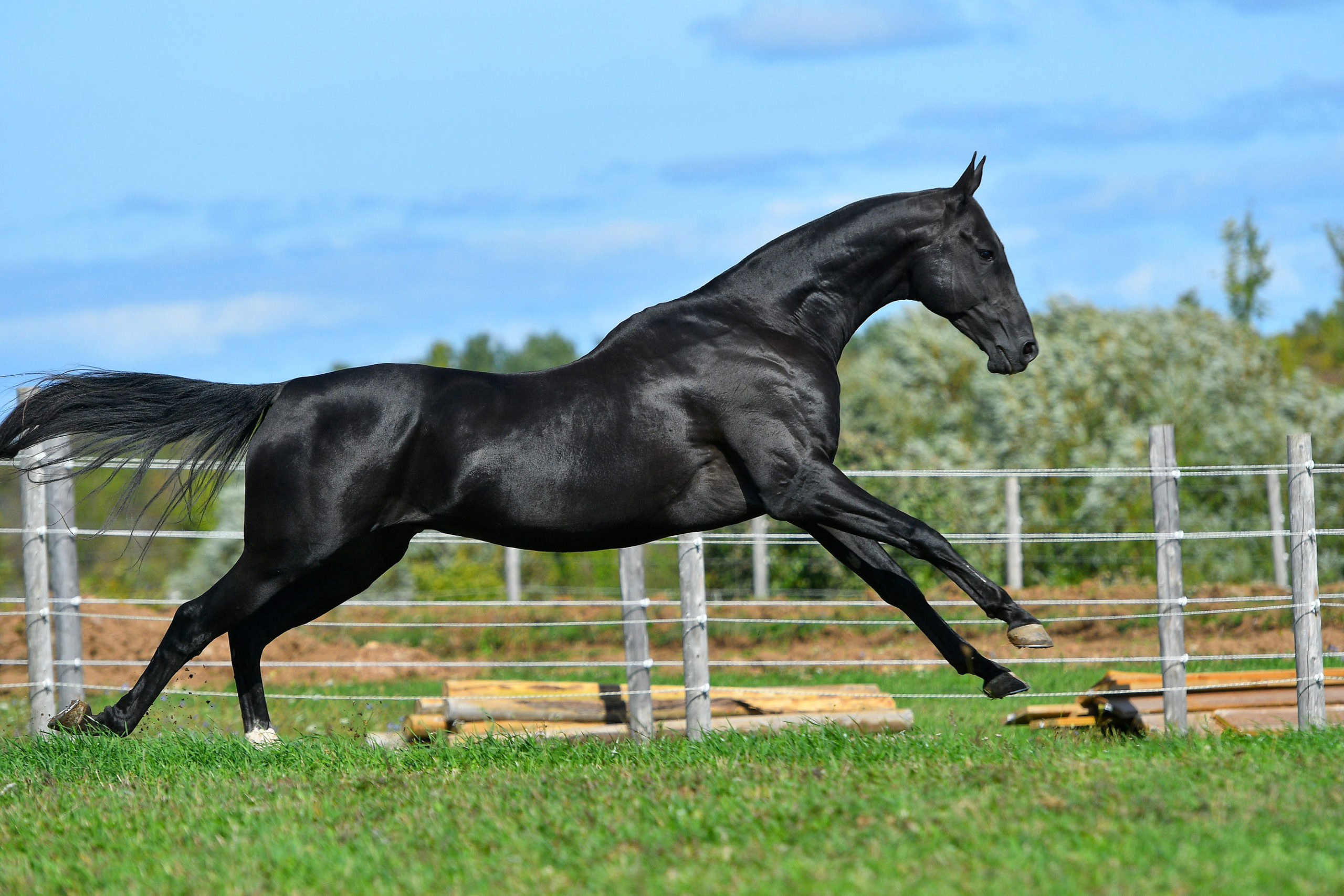
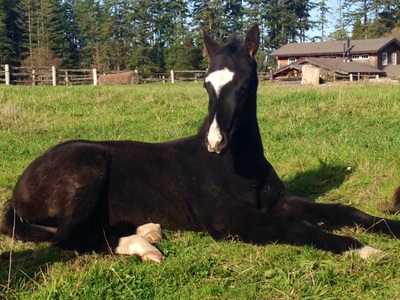

Smokey Cream
This is a combination of black with two cream genes. In this color, the eyes may be blue, grey or hazel. This Russian stallion is a perfect example of the rare color.
Bay (agouti) – AA, Aa
This is a dominant modifying gene, so the horse only needs 1 copy of “A”. “A” does not have any effect on red pigment. Once again, there can be a wide variety of shades, ranging from a “black-bay” to a “mahogany bay” to a “light golden bay”. Many Akhal-Tekes possess the “sooty factor” (or also called “countershading”) which give them dun-like characteristics of darkened withers, dorsal stripe, barring on legs.
Bay can be modified by one dilute gene (“Cr”) to produce a buckskin.
Bay can be modified by two dilute genes (“CrCr”) to produce a perlino.

Mahogany Bay
Above, the “sooty” factor, which gives a black tip to the hairs, produces many lovely variations in this color of Akhal-Teke.
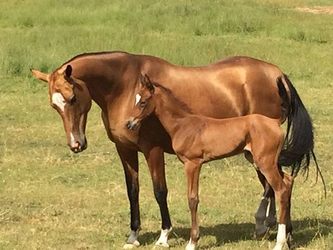
Light Bay
The Akhal-Teke produces some spectacular bays, with coats which glitter with reds and golds.
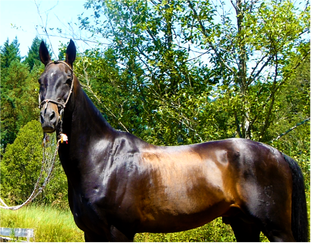
Dark Bay
There are also many variations of dark bay, as well as black bay. Often with beautiful dapples and gold or red highlights.
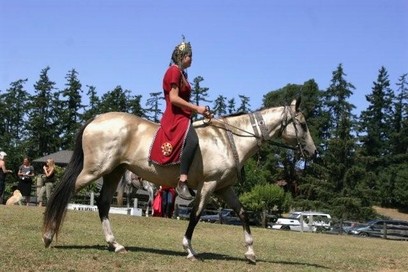
Buckskin (Golden)
Called “Bulanaya” in Russian, this is the archetypical color of the Akhal-Teke horse. These horses are sometimes purely buckskin (without a spinal stripe) or carry the “sooty” factor (with a dorsal stripe a few shades lighter than the mane and tail but darker than the coat and plainly visible). In this breed, because of the unique structure of the hairs, these horses may be quite dark in color and may even be confused with bay; however, when bred together, they can produce perlinos and cremellos. This stallion was the the first Akhal-Teke to reach the United States, photographed at three years of age at the Komsomol Hippodrome, Ashkabad, Turkmenistan.
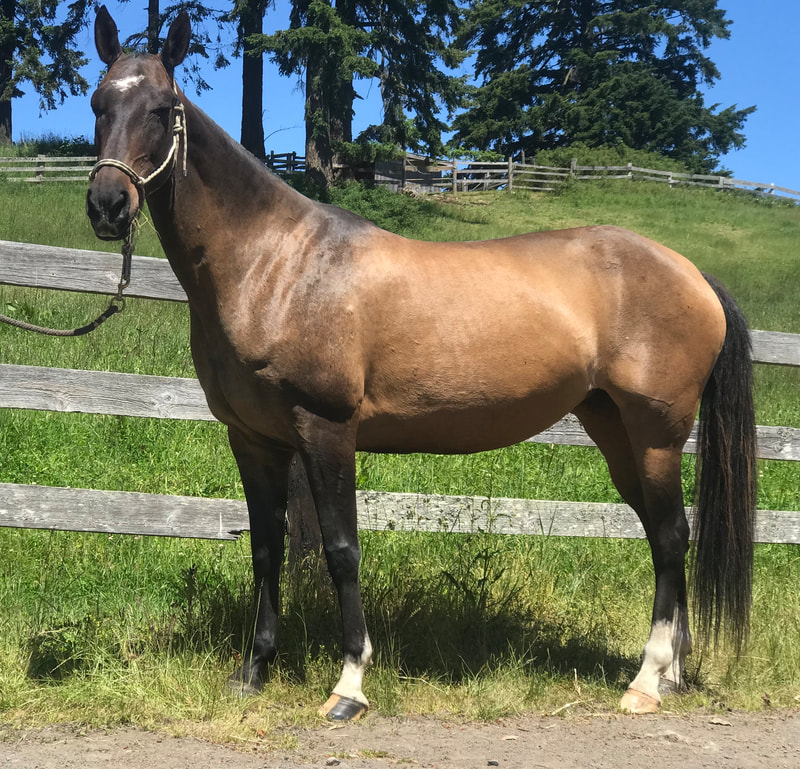
Dark Buckskin
Along with Golden Bay and Golden Buckskin… Dark Buckskin (sometimes called Smokey Buckskin) is a buckskin that carries the sooty factor, also referred to as counter-shading. It is one of the archetypical Akhal-Teke colors. In the sunlight, the coat glitters with gold in a way that a camera simply cannot capture. This color is so dark that it is often mistaken for a non-red bay.
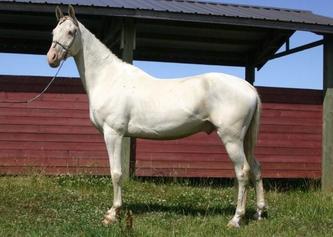
Perlino
Perlino differs from Cremello in that there is some reddish or brownish color to the tail and often the hocks, knees and legs. As with the cremello, the eyes are blue.
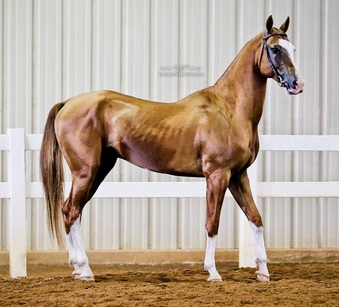
Red (chestnut) – ee
This is a recessive gene, so the horse must carry 2 copies of “e” (one “e” from each parent) for expression of red. There are many different shades of chestnut (red), ranging from a darker “liver chestnut” to a lighter “apricot” colored chestnut.
Red can be modified by one dilute gene (cream “Cr”) to produce a palomino.
Red can be modified by two dilute genes (“CrCr”) (one from each parent) to produce a cremello
In Tekes, chestnuts tend to be more golden than red, but there are a fair share of lovely redheads.

Liver Chestnut
While not as common in the Teke as it is in some other breeds, this color can still be found.
Palomino
The Akhal-Teke produces some truly amazing palominos, usually with plenty of “chrome!”
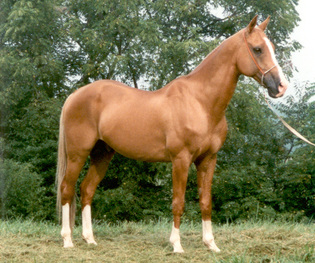
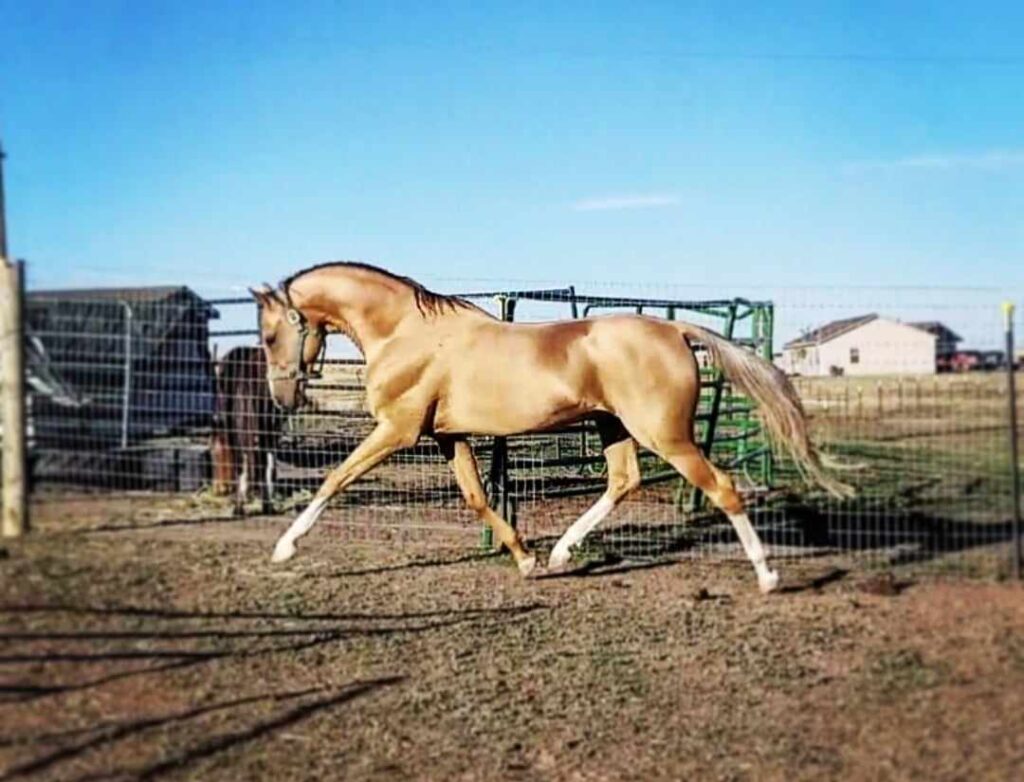
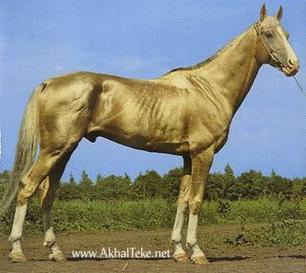
Light Palomino
This color also can be referred to as “isabella”, although in Europe and in Russian “isabella” refers to cremello and perlino. This famous Akhal-Teke stallion is Kambar, published in most breed books.
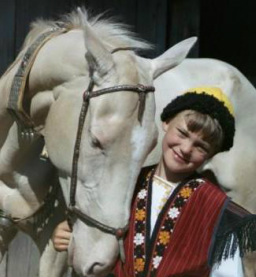
Cremello
Cremellos (or “isabellas” in Europe) and Perlinos are found quite commonly in the Akhal-Teke. The glow to the coat of these blue-eyed wonders is so strong that it is visible even in a darkened barn.
Grey – GG or Gg
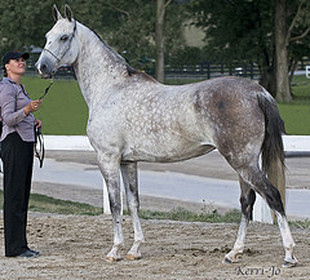
This is a dominant gene, so the horse only needs to have 1 copy of “G”. Grey is not a base color, so the horse can be born any of the above colors but will fade to grey.
Greys are common in Tekes. They are often beautifully dappled and many turn completely white. Note the hooded eye, particularly evident in this very sweet mare. She also has one blue eye, also fairly common in the breed (see below for more info about blue eyes).
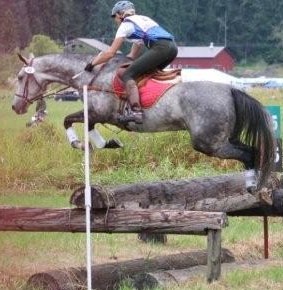

White Markings

Akhal-Tekes typically have white markings and some sport a great amount of it. What appears to be sabino pinto markings are not at all uncommon. The Akhal-teke breed has no known horses that have tested “positive” for the actual sabino gene (modification of roan), so it is assumed that they carry an unknown version of the “W” mutation.
Another color modifier, rabicano, is also seen. It is not a testable gene (yet), and can be seen on any base color. Horse will have a “skunk” tail and white hairs intermingled among base coat hairs along flanks and sides.
Older stud books list roan as an Akhal-Teke color, although this line seems to have died out as there is no known in existence today. Akhal-Tekes are registered on the basis of parentage only. While some breeders prefer some colors over others, there are no “disallowed” colors or markings in the Akhal-Teke breed.
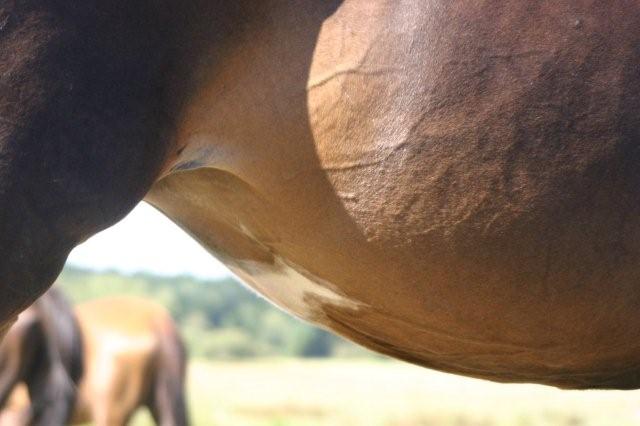
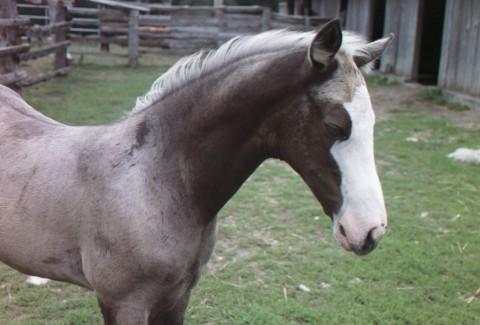
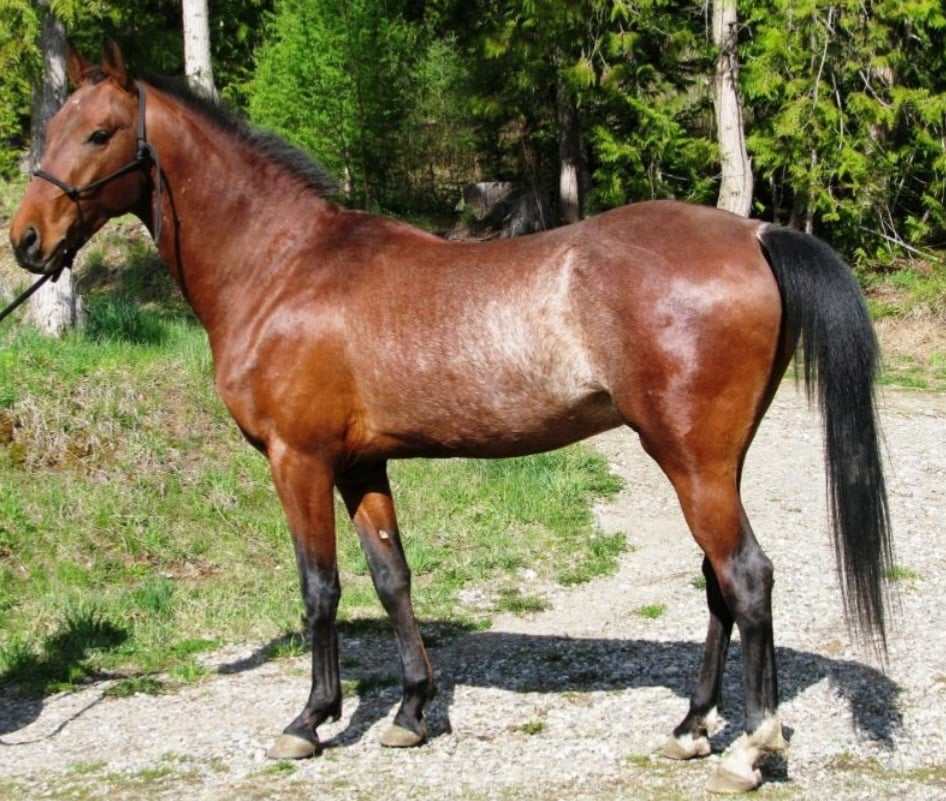
Hairs
The Akhal-Teke typically has a marvelous metallic glow to his coat. This is caused by the structure of the hair; the opaque core is reduced in size and in some areas may be absent altogether. The transparent part of the hair (the medulla) takes up this space, and acts like a light-pipe, bending light through one side of the hair and refracting it out the other side, often with a golden cast.
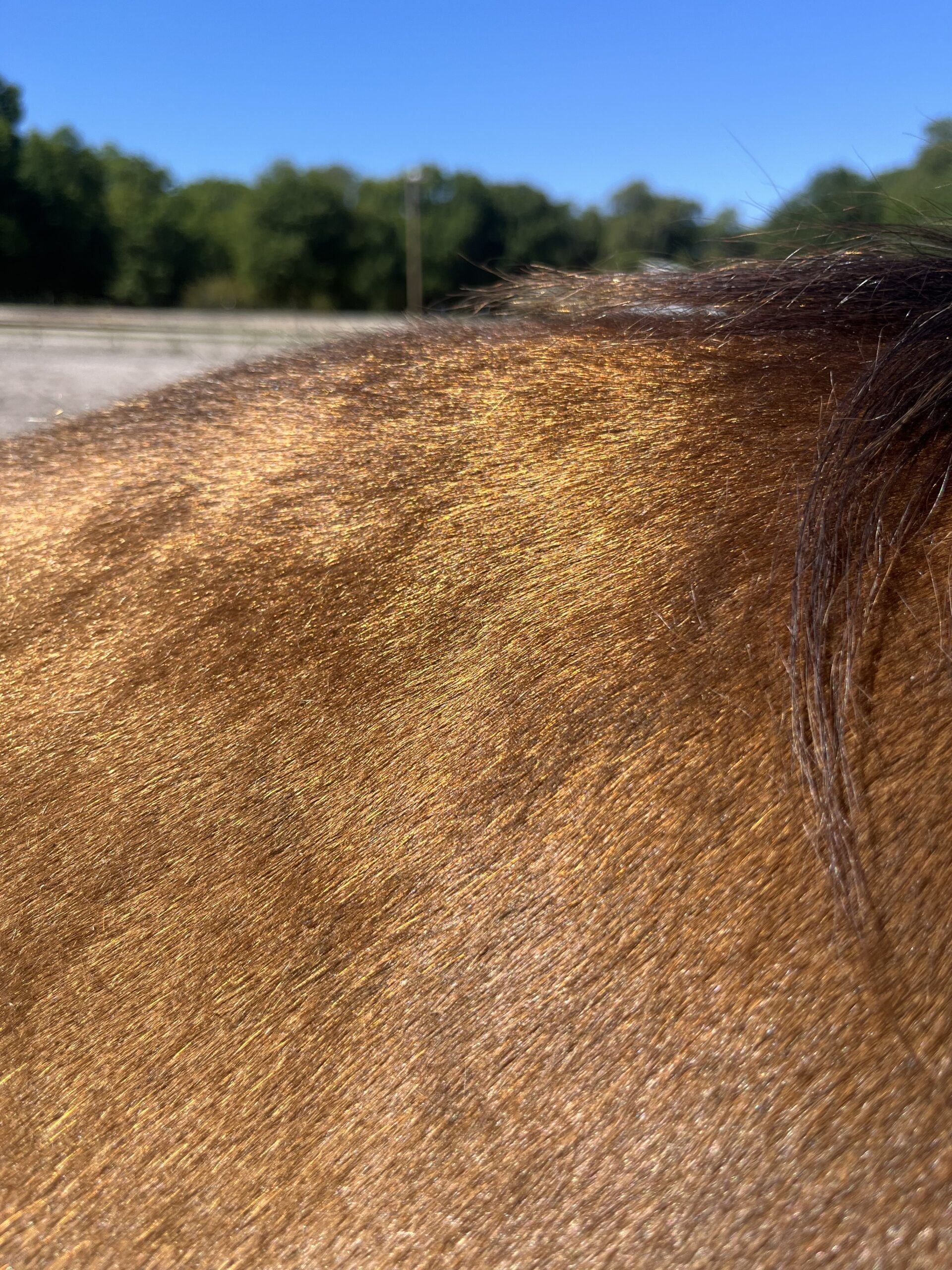
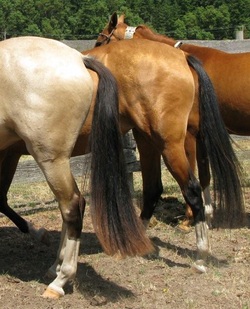
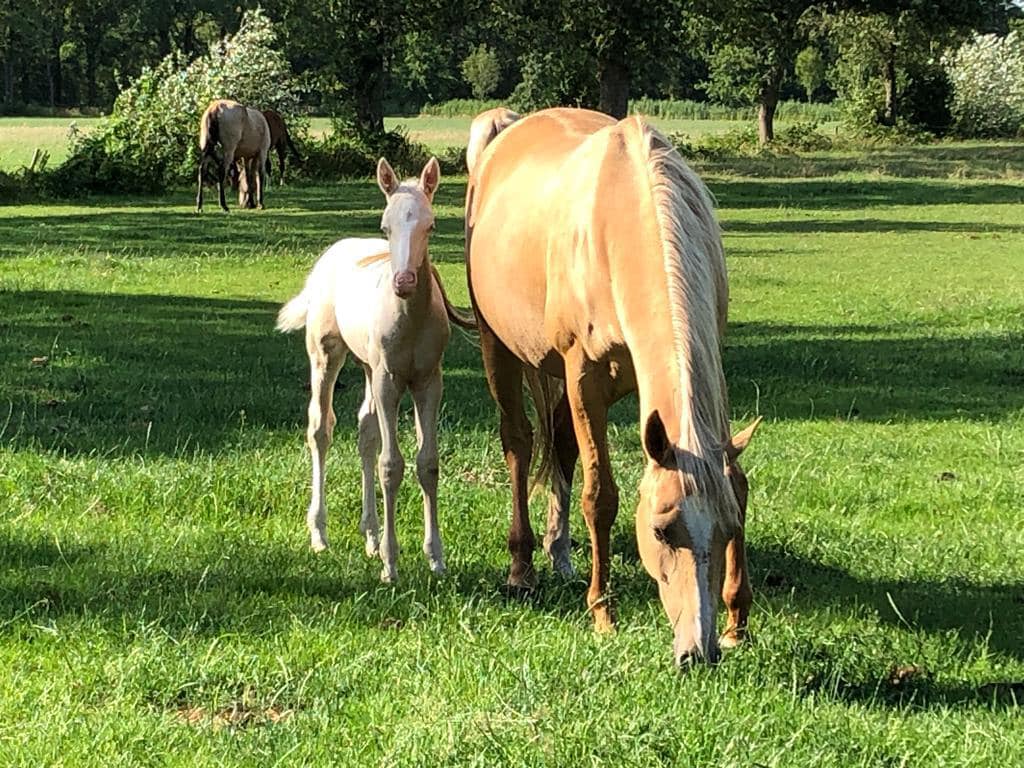
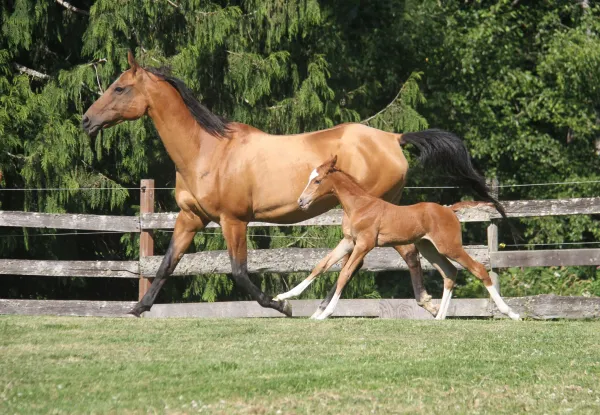
Blue Eyes
Blue eyes are fairly common in the breed, and not only in the Cremes.
It is not unusual to have a chestnut, bay, black, or grey with one blue eye, often “marbled,” where the eye is only partially blue. The effect is stunning!

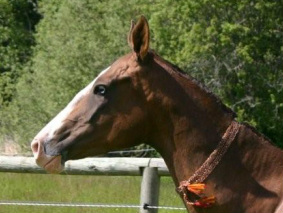




The information on coat color genetics was found on www.animalgenetics.us
